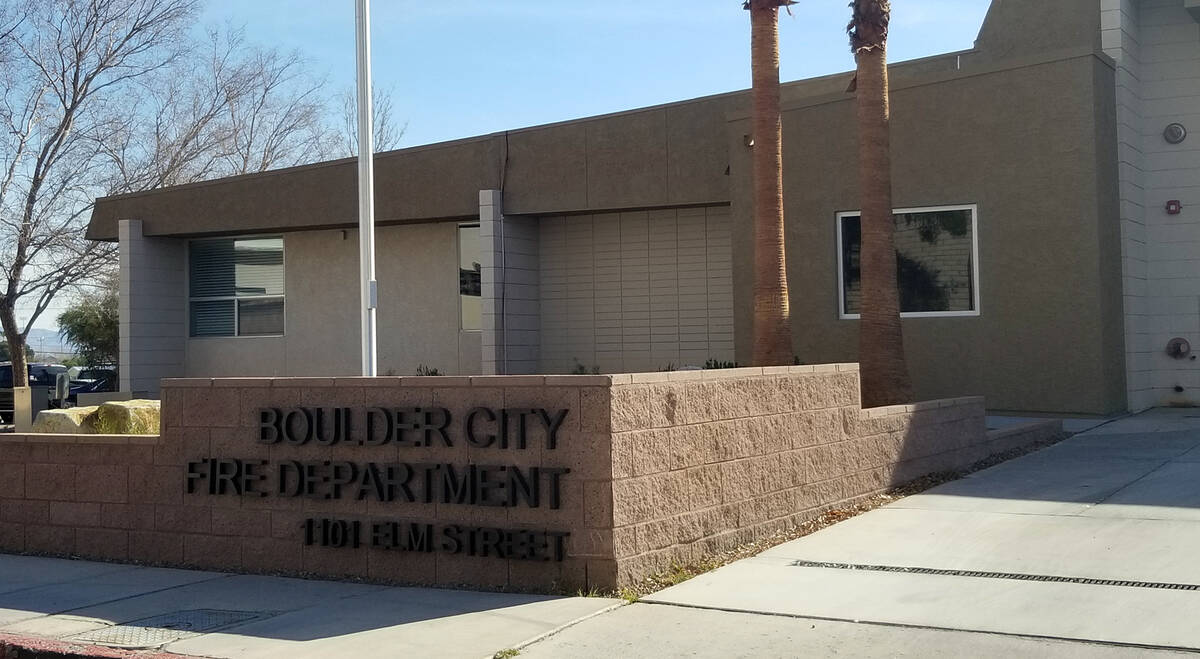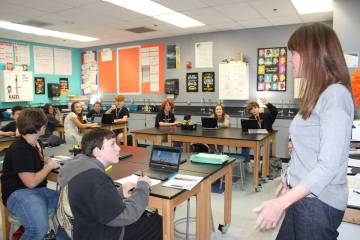Fire department seeks to add 9 to staff
Boulder City Fire Department is looking at adding as many as nine positions to improve its response time throughout the city.
Fire Chief Will Gray said a recent community risk assessment found that approximately 50 percent of residents live outside of the National Fire Protection Association’s standard four-minute response time and adding more personnel could help reduce those gaps.
“In Boulder City, it would be four minutes in all directions from the fire station at 1101 Elm St.,” said Gray. “In addition, about 21 percent of the time … calls overlap, meaning that both the frontline rescues are on calls at the same time. Subsequent calls for service must be handled by Community Ambulance, which has an average response time of 16-22 minutes once requested.”
According to the city’s finance department, the cost of nine new positions will range from $1.5 million to $1.6 million per year, starting in fiscal year 2024. For fiscal year 2023, the projected cost is $732,903 because the positions wouldn’t be filled until the year was half over.
Gray said that estimate is the most costly option and the department is also looking at several others.
Additionally, it is applying for a Federal Emergency Management Agency grant that would cover the cost of the new positions for three years.
“If Boulder City’s grant request is awarded by FEMA, and the City Council approves receiving the grant, the Staffing for Adequate Fire and Emergency Response (SAFER) Grant would pay for the new firefighters/paramedics for three years, at approximately $1.5 million per year …,” said Gray. “Until this year, the SAFER grants only paid 75 percent of wages/costs in year one, 50 percent in year two, and 25 percent in year three, but have been increased by the current administration. The funding is at the discretion of the federal government and subject to change at any time.”
If the city does not receive the grant, Gray said “it’s tough” to answer how they would move forward with the new positions and how to pay for them. He said the finance department would have to look at revenue sources and determine if the extra staffing would be feasible. They also have to determine how to cover the costs after the grant ends.
“The final decision would be up to City Council,” he added.
According to the community risk assessment, 6,900 residents and 3,065 homes are outside of the four-minute travel time to the fire station. When Gray presented the assessment to council in November, he said that response time is recommended because it increases the probability of surviving a home fire or cardiac arrest.
“When we look at our NFPA statistics … it would say if you live within that four minutes, you have a better chance of a successful outcome than if you live outside of it,” Gray said. “I will say if you live 10, 12 minutes away and you have a cardiac arrest, that’s a bad situation.”
More details about this proposal as well as other options will be presented to council at a future meeting.
Contact reporter Celia Shortt Goodyear at cgoodyear@bouldercityreview.com or at 702-586-9401. Follow her on Twitter @csgoodyear.
















